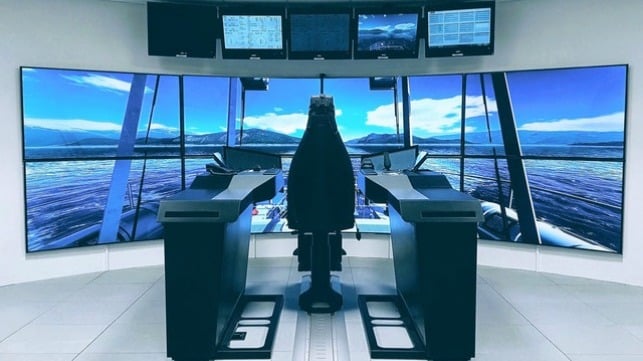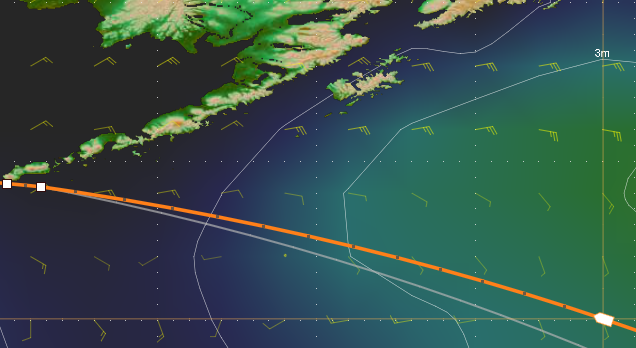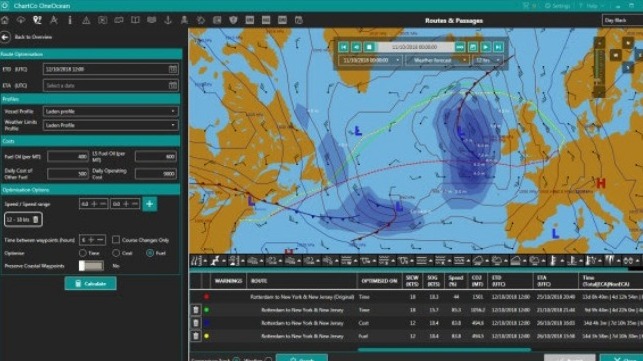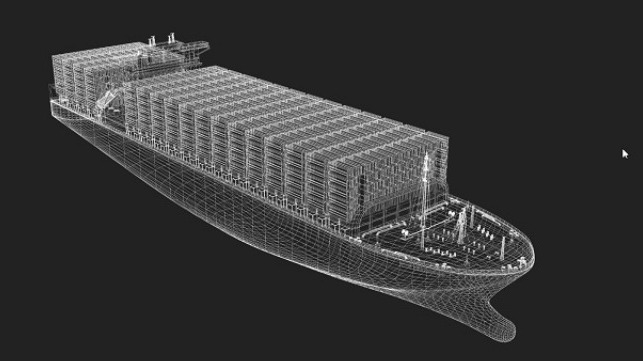From Maritime Executive by Michael O'Neil, StormGeo
This past September, StormGeo announced its acquisition of Nautisk — a leading supplier of maritime charts and publications.
By allowing us to integrate our routing and weather services with state-of-the-art charts and publications, this move pushes our company full-speed into the future of shipping technology.
It has also made me think about how ship routing will look in years to come, and how it will likely be delivered in a very different way than it is today.
Ships will be much more digitally connected with increasing access to high-speed internet.
This will allow route suggestions to be delivered in a format that the Master can accept directly into the ECDIS (Electronic Chart Display and Information System), rather than having to load them manually.
This is why we’re moving towards integrating all routing services more tightly with voyage planning and route transfer directly to ECDIS.
BVS (Bon Voyage System) route optimization
At present, a Master using BVS (Bon Voyage System) can send a route from the ship to our operations center.
We then evaluate it and pass a route back to the Master’s BVS.
In the future, much more complicated route plans could be passed back and forth addressing any number of weather or environmental concerns.
The improved quality of communications, sea-keeping data and weather data will allow for lower operating expenses as ships run more efficiently.
Given that the future of shipping will include a number of ships operated from shore as well as fully autonomous ships, I foresee routing information often being delivered to a shore-side operations facility rather than the vessel itself.
For those that continue to have a crew on board, information could be projected onto the bridge windows in a type of 3-D overlay, which would enhance situational awareness.
While vessel motion sensor technology is continuously improving, it is likely that ship routing systems will be able to take this data and provide more precise recommendations to the Master (on board or on shore) regarding vessel motions.
Having more precise vessel motion data helps to ensure the utmost in crew, ship and cargo safety.
MOL starts initiative to develop enhanced operational support tool, aiming at a new level of safety
Captain’s Dynamic Operation System for Counter planning and Analysis (Capt.’s DOSCA),
provided by Weathernews Inc.
Ship Routing’s Impact on Fuel Efficiency
In addition to the sensors mentioned above, there will also be engine sensors that report on all engineering systems and the cargo on board.
These sensors and the data they send can allow for optimized heating/cooling of cargo, engage or disengage the shaft generator, and make changes in the heading and speed of the ship.
The latter will reduce sloshing for liquid gas carriers and reduce the risk of parametric rolling for container ships.
credit : StormGeo
Beyond sensors, there will be tools on board the ship and in the shore-side operations centers to better manage constant power, which, when properly implemented, has a profound impact on fuel efficiency.
This, of course, is a service we provide today but it is subject to certain human factors on board the ship that limit the efficacy.
ChartCo and MeteoGroup Announce Long-Term Partnership
Where Will Autonomous Ships Be Utilized?
There are significant safety and economic reasons to move towards semi-autonomous shipping, which for me, refers to ships that will have a crew operating the navigation and engineering functions from a shore-side operations center.
From a safety perspective, I foresee shore-side operators working with extremely sophisticated tools that will continuously check decisions and thus reduce human error.
Some are predicting the advent of remotely operated vessels by as early as 2020.
While it may be an industry norm to have fully autonomous ships in 2030, I expect they will still be very much the minority.
I believe these ships will mainly operate in lower traffic areas and on short voyages of four to five days or less.
It’s important to note, however, that in 2016, shorter voyages made up close to 60 percent of the total maritime transport of goods to and from the main EU ports.
So these ships may actually be in great demand.
The Age of Customization
Despite all this, there is one area where not much will change: the need for recommended routes.
It will take much larger leaps in technology to develop a ship capable of sailing through any weather.
A vessel capable of withstanding the heaviest weather Mother Nature can produce would not be effective in carrying cargo or passengers.
With the innovation within sensors, new ship designs and improved shore to vessel communication, solutions for the industry are becoming more ship-specific.
From vessel-specific hull curves to the capture and use of vessel-specific sensor data, solutions will be more customized than ever before.
Companies using these tools will be able to precisely recommend the main engine load and RPM’s to achieve a superior level of fuel efficiency.
Whatever the future, StormGeo will always keep an eye on what lies ahead, while continuing to employ lessons learned from decades of supporting ships along safe and economic routes.
Links :
- MarineLink : Work‘bots’: Autonomous Vessels Arrive
- Marimec : Weather accounts for 80% of vessel performance and must not be ignored
- Maritime Executive : US Navy Seeks Maritime Industry's Input for Unmanned Vessel / MeteoGroup Releases New Version of Weather Routing System / ChartCo and MeteoGroup Announce Long-Term Partnership
- Seatrade Maritime News : Navtor, WNI to work towards AI routing service
- Supply Chain Dive : Ocean vessel suppliers consolidate in race for autonomy by 2020
- GeoGarage blog : A maritime revolution is coming, and no one's in the ... / Rolls-Royce wants to fill the seas with self-sailing ships / Norway takes lead in race to build autonomous cargo ships / Ghost ships IRL: How autonomous cargo boats ... / Future land-based centre for controlling a fleet of autonomous RC ... / ESA helps faster cleaner shipping / Who's driving that boat? No one




DigitalShip : StormGeo launches Navigator Solutions Portfolio
ReplyDelete